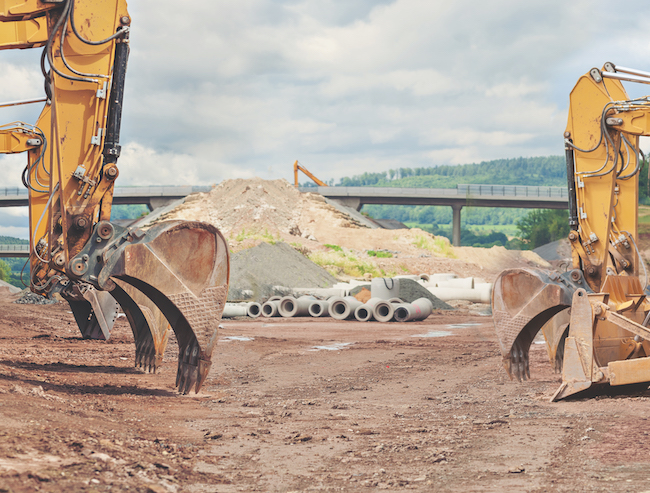
How the right lubricant partner can advance your green construction agenda
By Scott Kwas and Alan Harris
Equipment
The majority of construction companies have no long-term agreements in place for lubricant supply. PHOTO: Adobe Stock/Val Thoermer
Across North America, construction sites with embedded sustainable practices are quickly gaining traction as investor and public demand for green construction projects experiences unprecedented growth. According to industry experts, the ‘green’ construction market is expected to grow by 10.26 per cent globally by 2023.1
The surge in sustainable construction has benefits beyond environmental considerations and can impact the bottom line. For instance, 68 per cent of contractors polled for a recent study2 experienced growth in demand for sustainable methods in the last five years. Nearly two-thirds of contractors said sustainable construction capabilities are important when competing for clients.
The right partners can deliver on both sustainability and profitability, and the equipment optimization and reliability space are no exception.
One of the most impactful strategies for increasing on-site sustainability is improving fuel economy. It might surprise you to know that your lubricant supplier should be capable of delivering a customized equipment optimization program to help your company meet this goal. In short, your lubricant supplier should deliver more than just lubricants.
Currently, long-term lubricant supply agreements are uncommon in the construction industry, with 60 per cent of construction companies having no long-term agreements for purchasing lubricants.3 Consequently, despite sustainable practices being desirable on-site, equipment programs can lack the in-depth problem solving achieved through an uninterrupted collaborative relationship with a supplier. Ineffective equipment programs contribute to increased downtime, burning more fuel, and disposing of more oil than might be necessary, thereby expanding a company’s carbon footprint and inhibiting the environmental and financial benefits desired in sustainable construction.
The right partner will provide everything from training, counsel, and on-site support to design recommendations about specific, effective products and services that yield energy and financial savings while prolonging equipment life.
At a minimum, your supplier should provide a complementary site visit and maintenance practice assessment. Areas of focus for the assessment should include a standard review of lubricant storage and handling, contamination control, lubricant application practices, oil condition monitoring analysis and maintenance frequency. Also, a leading supplier should identify knowledge gaps for employees and offer a structured coaching plan to upskill or reskill as needed. A partner supplier will also analyze maintenance data, beyond the product supplied, to devise actionable recommendations, standard procedures and establish KPIs (key performance indicators) to help optimize equipment usage and life.
After the on-site assessment has been completed, improvement strategies should be identified by field-based experts with an expected value delivery, in cost savings or productivity increases, along with the projected completion date for improvement projects. Thereafter, follow-up assessments should be completed on a set interval to ensure continuous monitoring and improvement. In response to customer needs, harnessing technology to deliver value through continuously evolving solutions, such as on-vehicle telematic sensors, web-based oil analysis applications and long-life products, is critical and should be explored with your supplier and solutions provider.
By consistently partnering and collaborating with a supplier, your company can prioritize a proactive maintenance program versus a reactive, transactional approach. A supplier’s critical role is uncovering the root cause of the equipment failure and suggesting a solution to prevent its reoccurrence. Most importantly, the supplier should leverage their technical services and expertise to find ways to deliver business value beyond the product being supplied.
As on-site sustainability demands and trends are continually evolving, construction companies can ease the burden of keeping up with these shifting standards by retaining external counsel from trusted, trained, and passionate engineers who provide industry-leading solutions that are not available in-house. This collaboration augments sustainable practices on-site and allows your staff to focus on executing their unique job functions.
Lubricants comprise only three to five per cent of a typical maintenance budget for most construction companies. As the trajectory of green construction trends upwards, implementing solutions-based lubrication programs delivered by world class suppliers is a necessary step for companies aiming for pre-eminence in the construction industry.
Scott Kwas is the technical team lead for Shell Canada. He has been a member of the Shell Lubricants Technical Team for over seven years and with Shell Canada for 15 years. Prior to his roles as a Canadian technical team lead and technical advisor within Shell Lubricants, he was the assistant engineering manager for Shell Aircraft International in Calgary. Kwas holds an Aircraft Maintenance Engineering license from Transport Canada. He is also a Certified Lubrication Specialist with the Society of Tribologists and Lubrication Engineers.
Alan Harris is Shell business development manager for Services in North America. He leads Shell Lubricants North America (U.S./Canada) Services Team and has been with Shell Lubricants for 21 years. The North America Services Teams is responsible for the development and delivery of core B2B Digital Services to meet current and future customer needs. Prior to his role with North America Services Team, Harris has held several key commercial roles within Shell Lubricants leading to customized solutions.
Notes
1 MarketWatch. (2019). Green Building Market 2019: Global Size, Opportunities, Business Growth, Comprehensive Analysis, Competitive Landscape and Potential of the Industry through 2023.
2 Source: PRNewswire (2017) Trend Insight Sustainability In Construction
3 Frost & Sullivan, Construction and Rental Market Survey, July 2020




